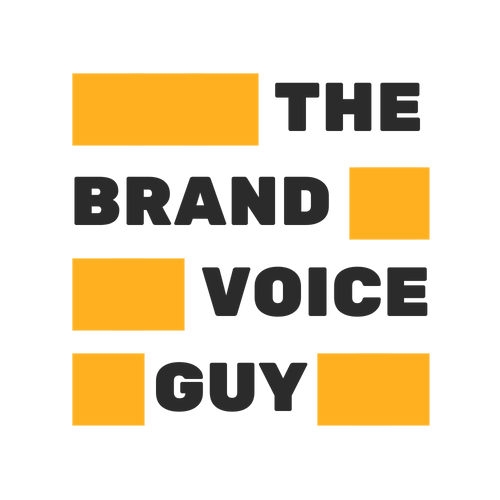
I was going through everything their closest competitors (and a few up-and-coming businesses) had published in the last couple of years. Blog posts, sales pages, ad copy, landing pages, sales pages, newsletters… you name it, if it involved words, I poured another cup of coffee and read every single word.
In fact, they don’t place a high premium on differentiation of any kind at all.
Every page I read offered the same benefits as the one I’d read before, written in the same way and using the *exact* same words.
By the end of the process, I realised something. I could create a perfectly serviceable sales page by hodgepodging sentences of copy from each of the competitors together almost at random.
In fact, in the end, you could easily have taken this page of copy, pasted it on any of their sites and no customer would ever have known the difference.
They were all that generic.
And this isn’t unique to engineering firms.
Coffee brands do it. Beer brands do it. Sports brands do it. Car brands do it… etc, etc, etc…
In fact, a few years ago, Alastair Herbert and Dr Ali Goode of Linguabrand analysed four million brand words and found that 54% of everything brands say is generic and incredibly similar to their competition.
On top of that, those brands were investing more money into saying the same stuff as competitors than in trying to say something unique and different.
Crazy, eh?
It’s why videos like this…
…are so incredibly bang-on. (And hilarious. I’ll never get bored of this video.)
The problem is, sounding like your competition is a BIG problem.
Using the same words as your competition and the same voice immediately positions your brand as a commodity and enters you into a race to the bottom based on price and little else.
AND it makes your brand generic, forgettable and interchangeable. (Why would any customer remember or choose your brand over your competitors’?)
As Jennifer Havice points out in her book, Finding the Right Message:
Posed with multiple websites selling similar products and services, most of us will keep hitting the back button and resuming our search for what we want until a compelling message gives us a reason to stop looking.
Sounding like everybody else gives your customers absolutely no reason to stop looking. If anything, it encourages the opposite: the dreaded “oh yeah, I’ve heard all this before” yawning, rushing-to-close-the-tab response.
And that’s not what you want. Not at all.
In fact, ten years ago, Jason Fried, the CEO at Basecamp, wrote about brands and the words they use and said:
What does it say when tens of thousands of companies are saying the same things about themselves?
When you write like everybody else and act like everybody else, you’re saying “our products are like everybody else’s too”.
(I love this quote.)
is your brand saying ‘our product are just like everybody else’s too’?
If you’ve got 15 minutes and want to find out how much of what you’re saying is making you blend in with your competition, here’s a great little exercise you can do:⠀
✂️ Copy and paste some copy from your brand’s website and from two or three competitors’ sites into a document. (If you want to go deep, take something from your homepage, your about page, a blog post and a sales/services/product page.)
❌ Go through and anonymise the text (remove any identifying words: product names, brand names, locations, dates…)
🔎 Ask a colleague or friend to read over them and see if they can tell which one belongs to your brand. (And which ones belong to your competition.)
If your friend can immediately spot your brand, bob’s your uncle! That’s a fantastic sign. Ask them what words/sentences gave it away and note their answers down. That’s an area you can double down on to strengthen your voice.
If not (or if they have to take an educated guess): you might want to think about ways to make your brand’s voice a little more distinctive. Could you have more character? Could you lean into different aspects of your brand? Take a different position? Have more of an opinion? Be funnier? Use conversational language?
And if you want to dive deeper:
👉 Make a list of all of the words that you and your competitors use. Then decide which ones are crucial (to make you look knowledgeable, trustworthy, etc…) and which ones are filler. Keep the good, in-the-know jargon, ditch the jargon monoxide.
👉 Look at phrases and positioning that crop up again and again and think of ways you can put a new spin on that? (As some quick and fairly rubbish examples, if everybody says “saves you time” can you put it in real terms like “gets it done quicker, so you can get home to your family” or in funny-ish terms like “done quicker than you can say “Oh wow, that was fast”?)
👉 Look at customer reviews of the products/services of your brand and your competition. What words are cropping up in these that also crop up in your copy? These are the ones to keep, even if your competitors use them. (Take a closer look too: are there words that your customers are using that your competition aren’t? STEAL THEM and USE THEM!)
👉 Are there any things that aren’t being said by any one (but should be)? Write them down. That’s your new, distinctive approach right there.
After half an hour or so of digging around, you should be starting to see areas you can move into, phrases you can use and wordy ways to differentiate your brand immediately.
In fact, you’ll probably feel a lot like this…

(At least, this is how I feel when I’m doing it.)
☝️ And that’s where the magic happens.
Pinch THE EXACT PROCESS I USE TO DEVELOP brand voices. 👇
Sign up here, you legend. 👇

